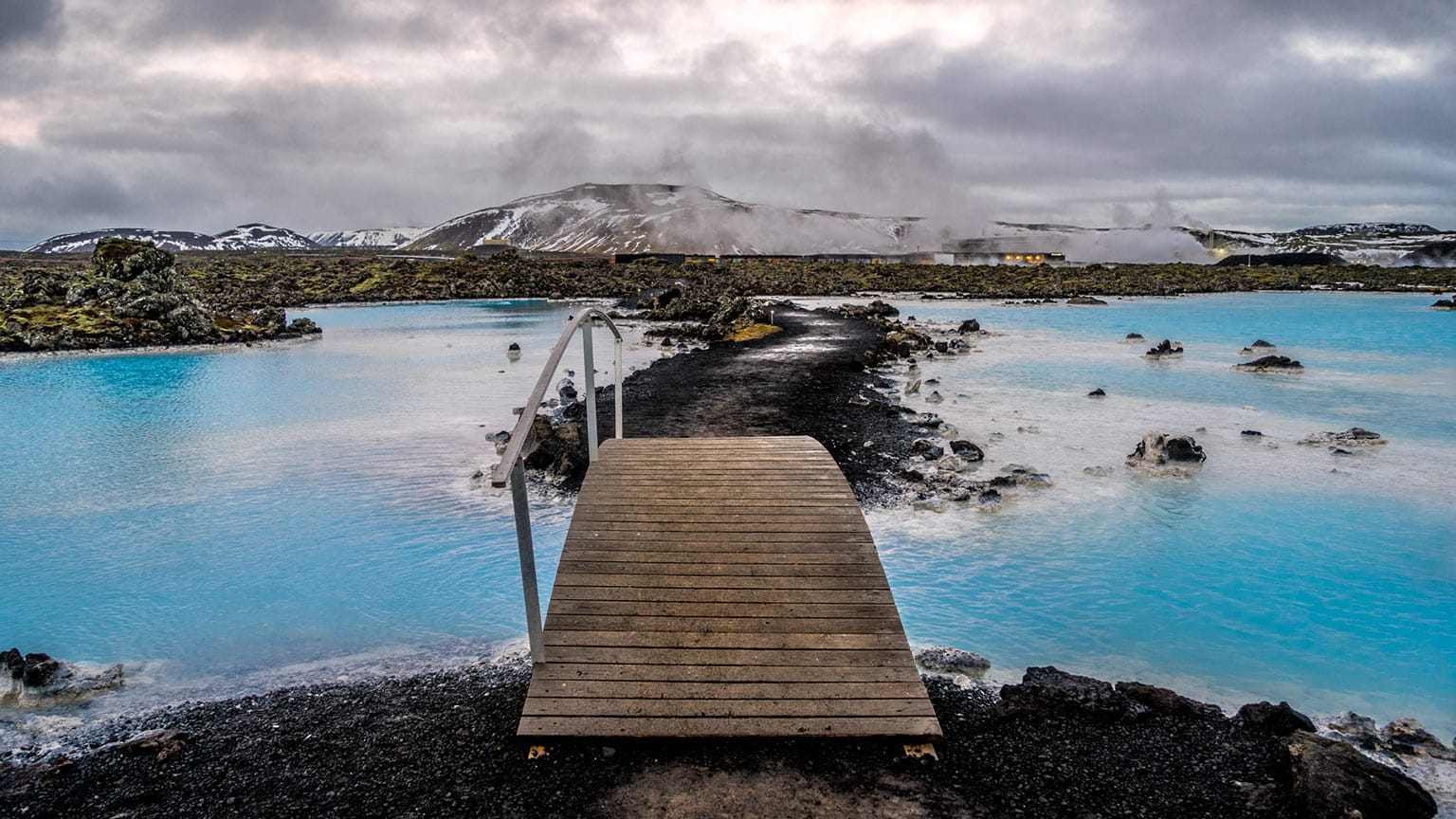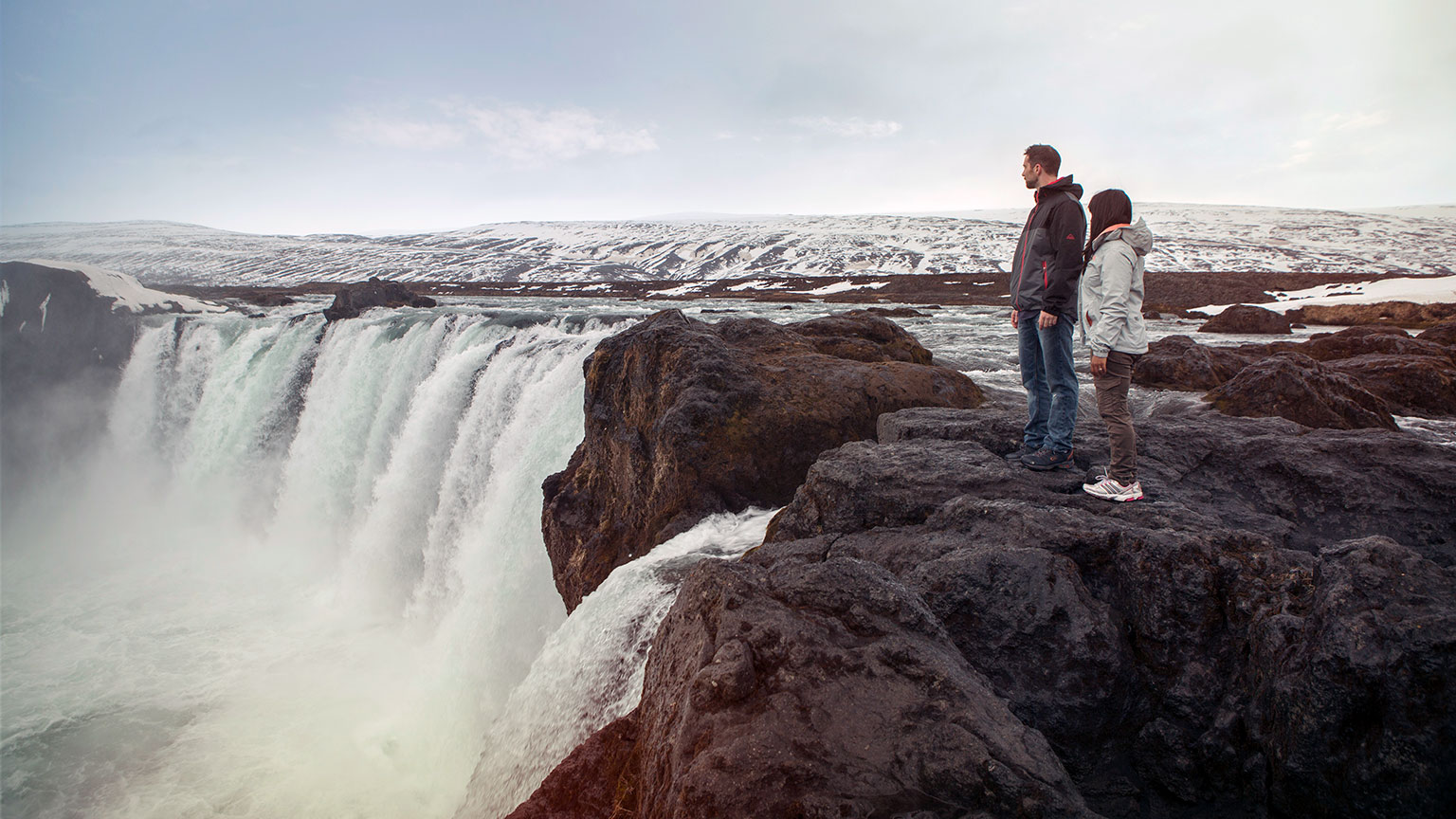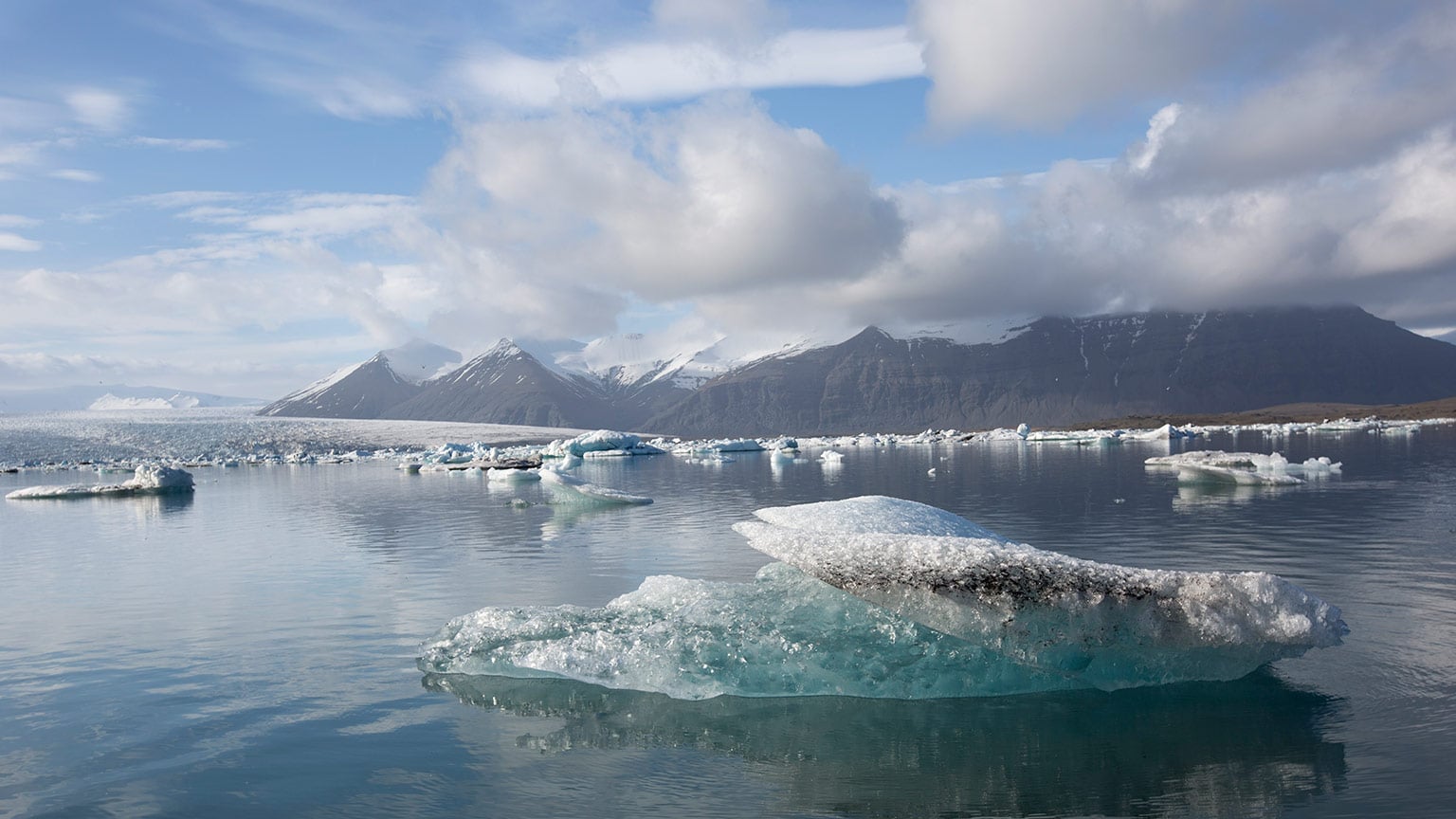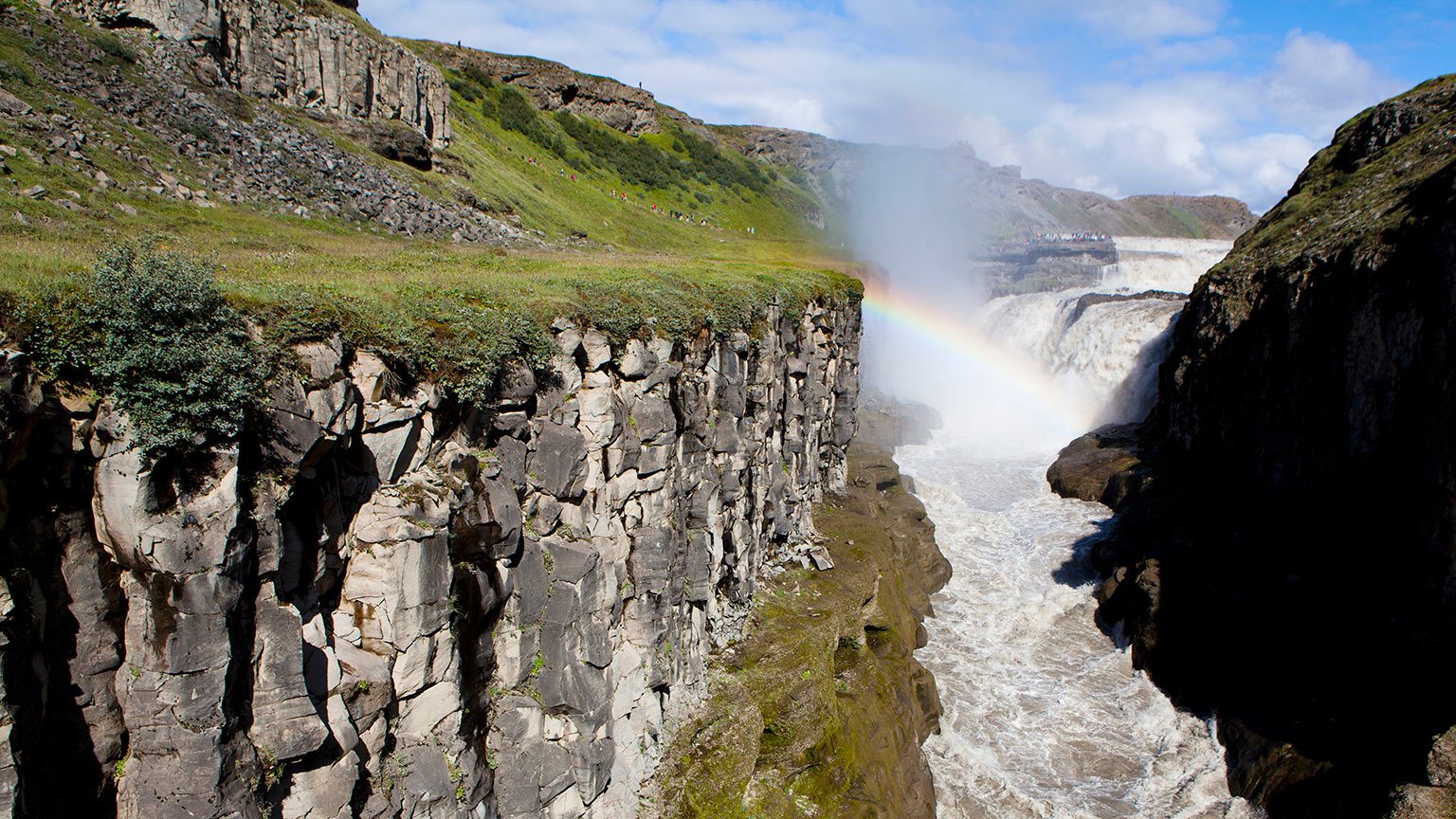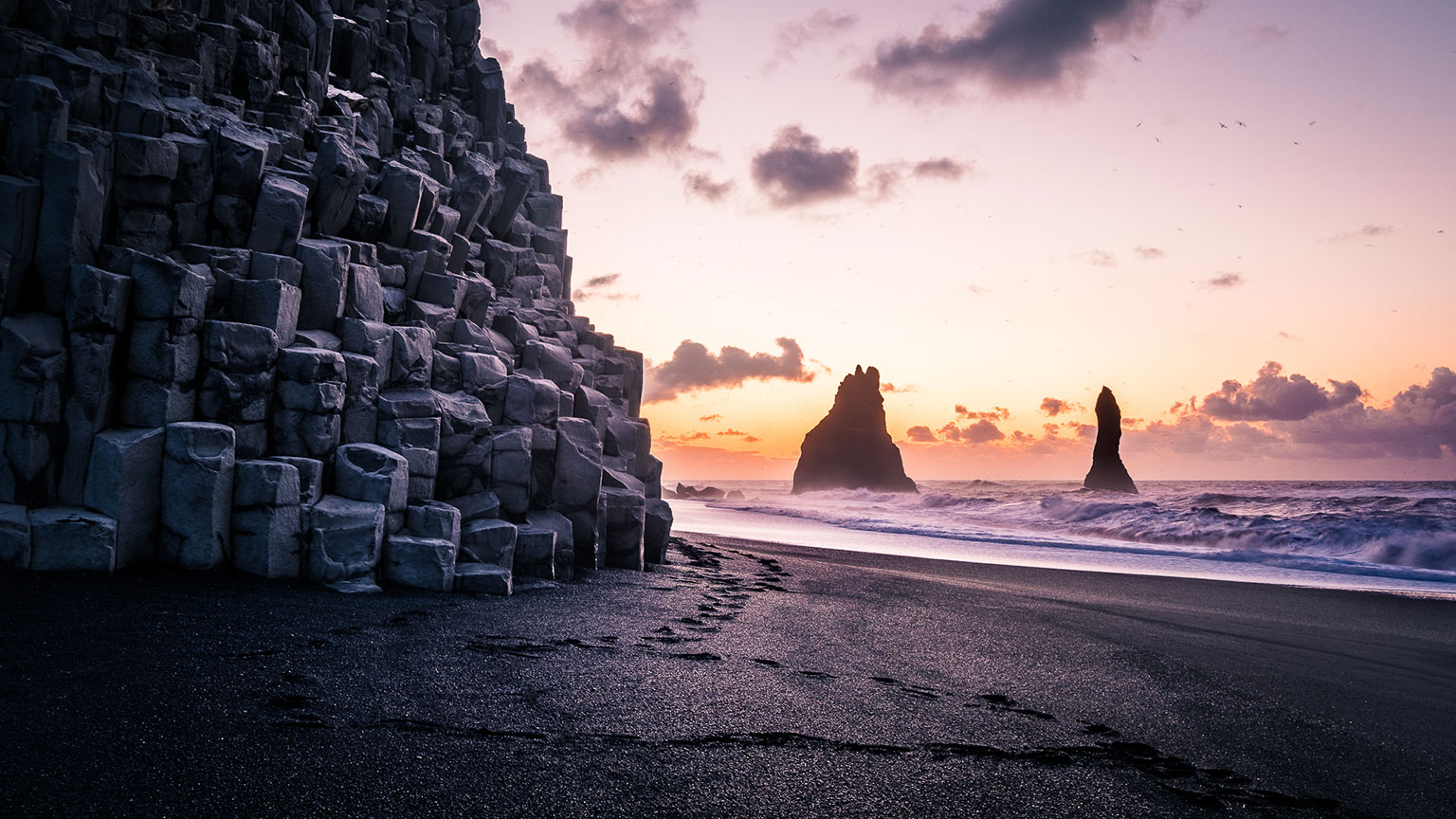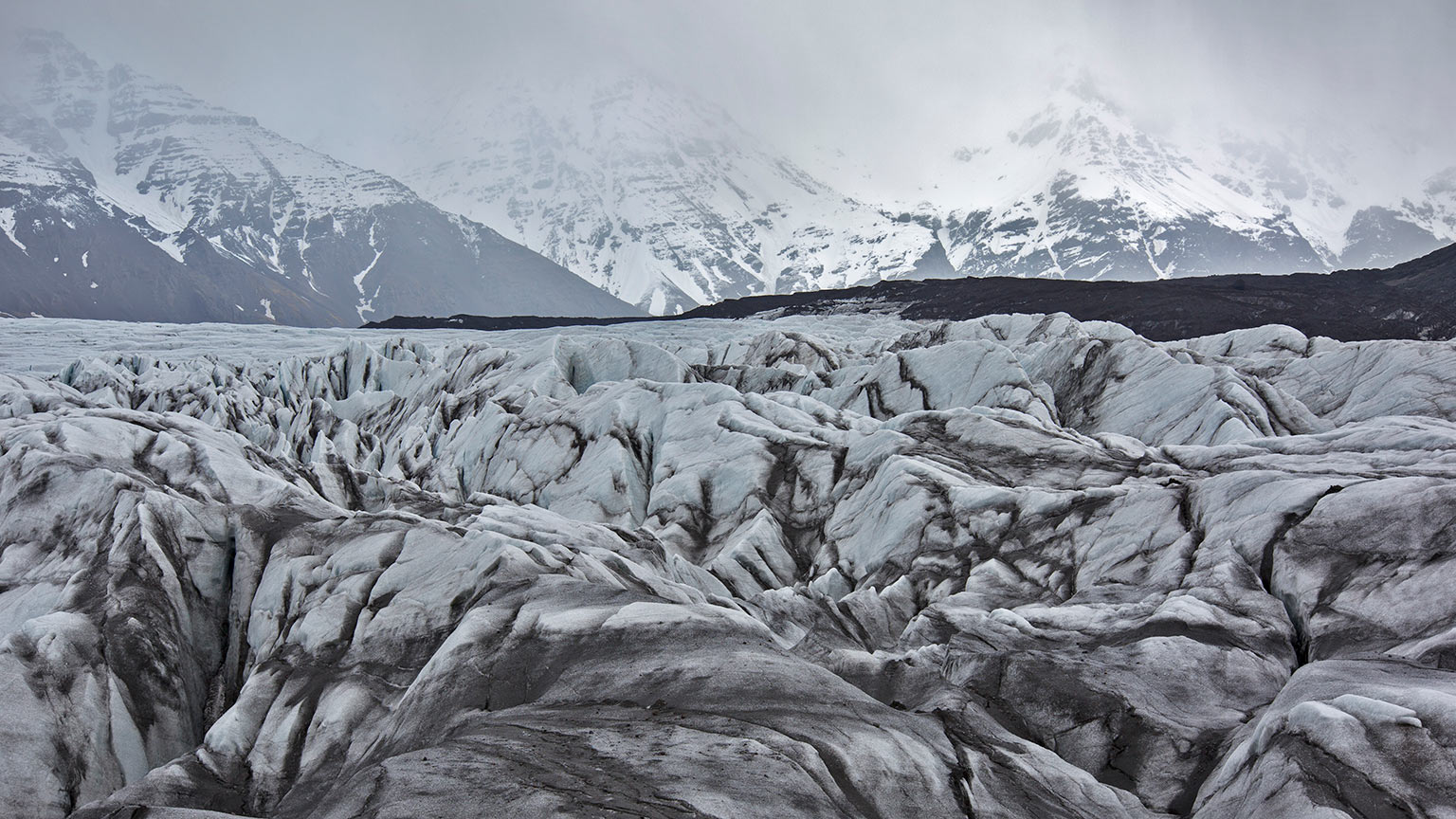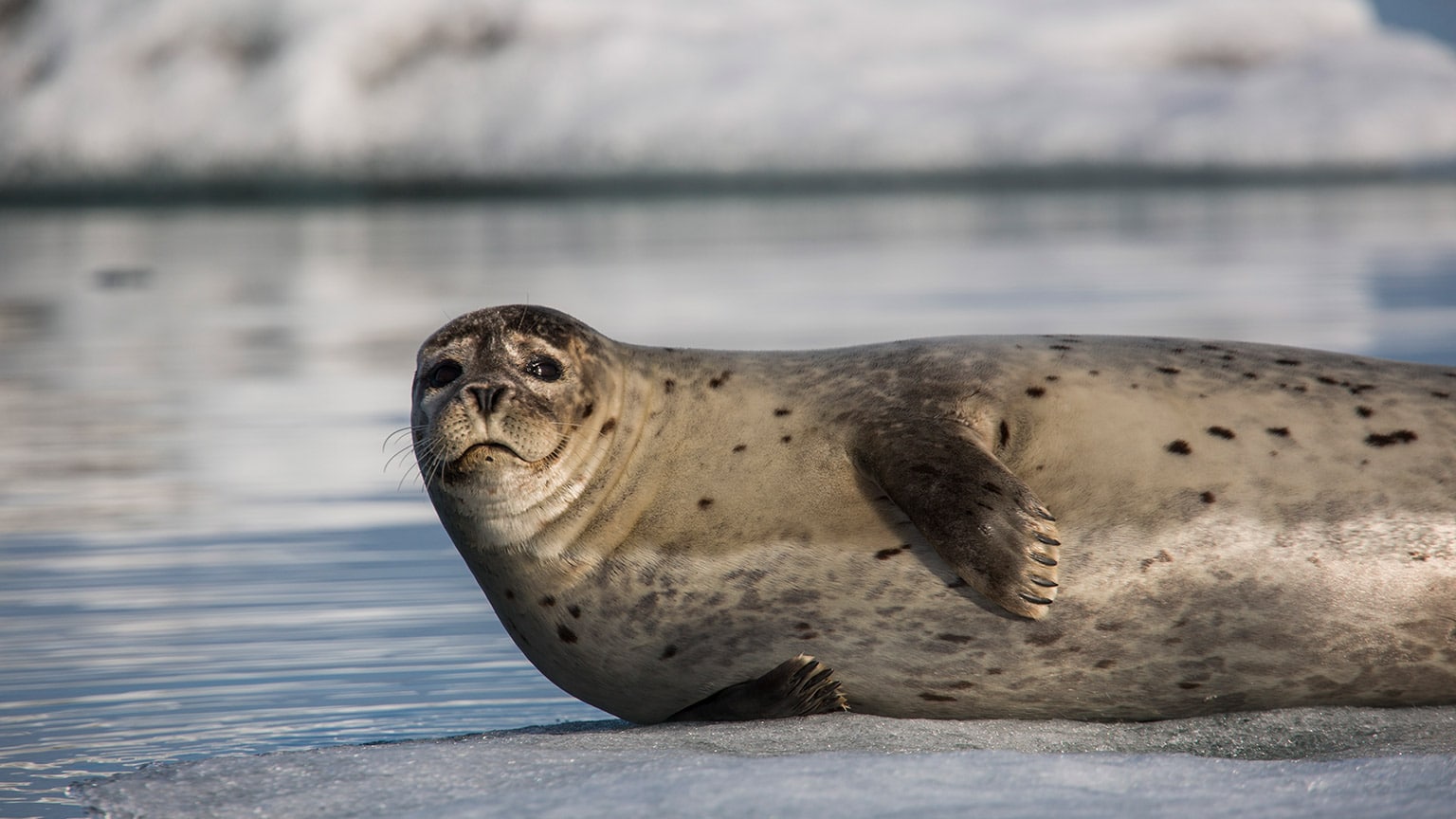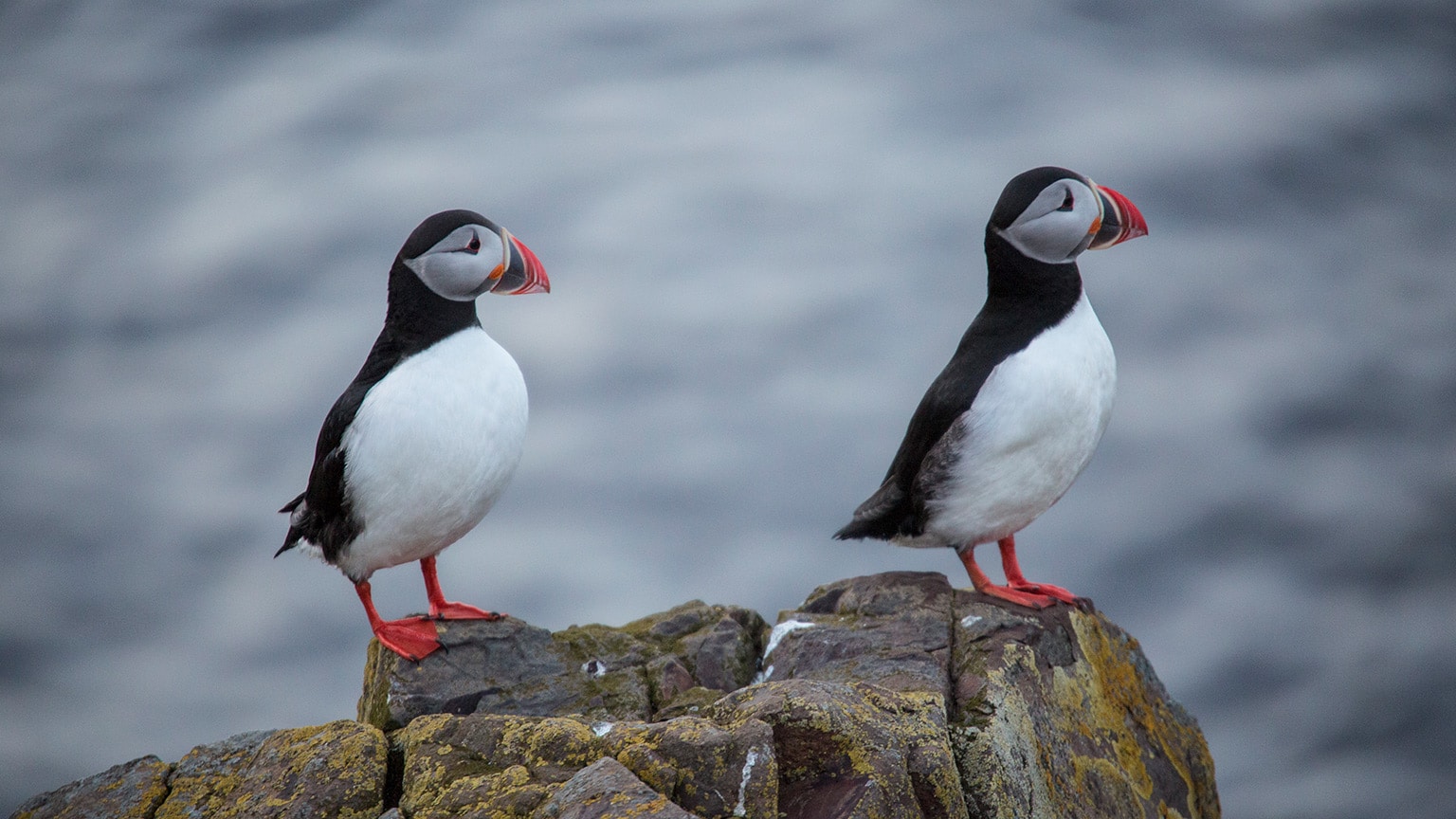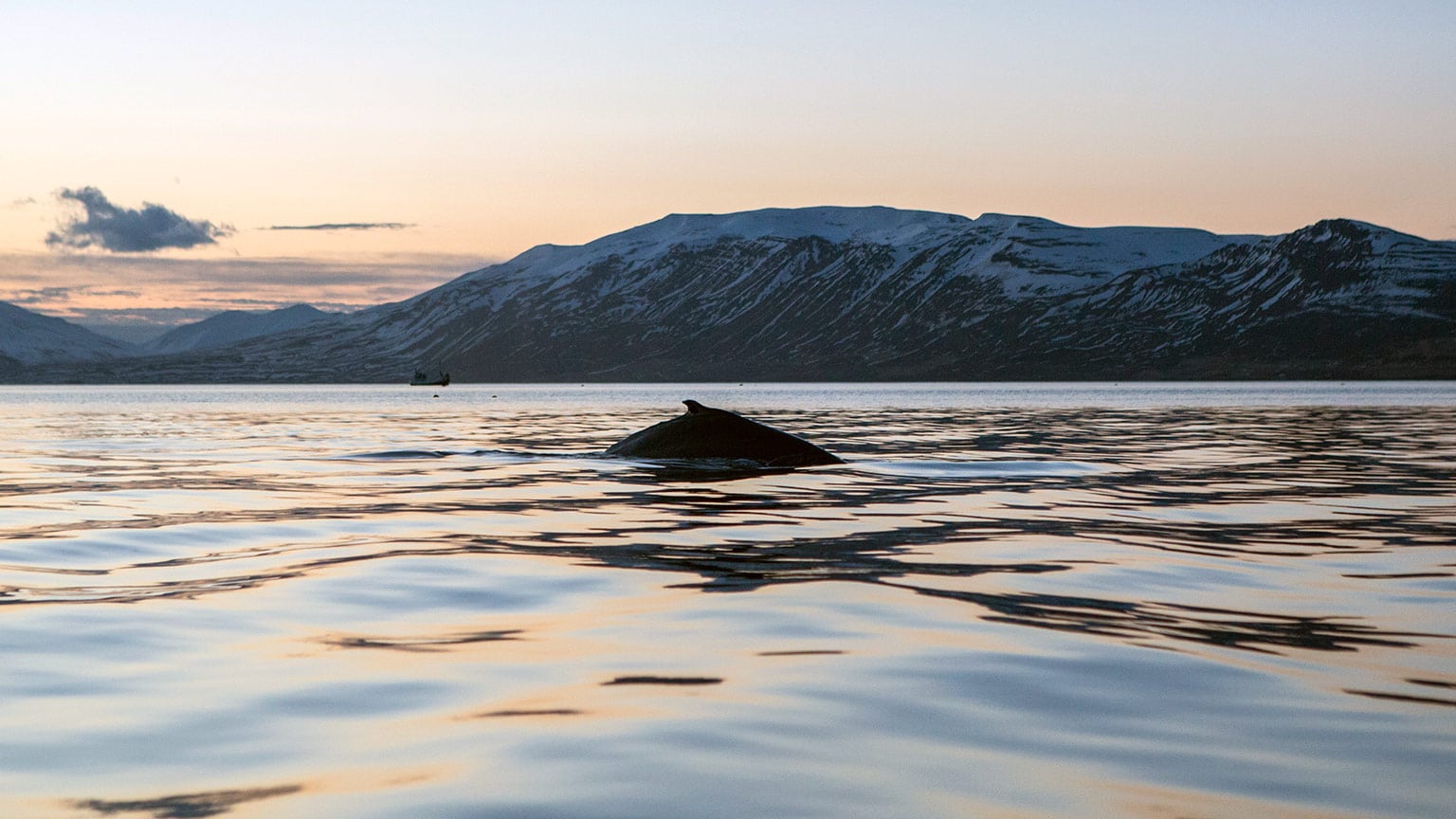Price
 $3087
$3087
Overview
If you’re looking for a fast but full visit around Iceland, this 7-day trip fits the bill perfectly. It’s got tons of hidden gems that you won’t find on any other trip and enough free time to experience highlights such as seeing erupting geysers, visiting glacier lagoons, and exploring breathtaking waterfalls and black sand beaches. Be sure to pack your sense of adventure and get ready to feel Iceland under your feet. Visit Iceland with us, all while earning professional development credit with other educators.
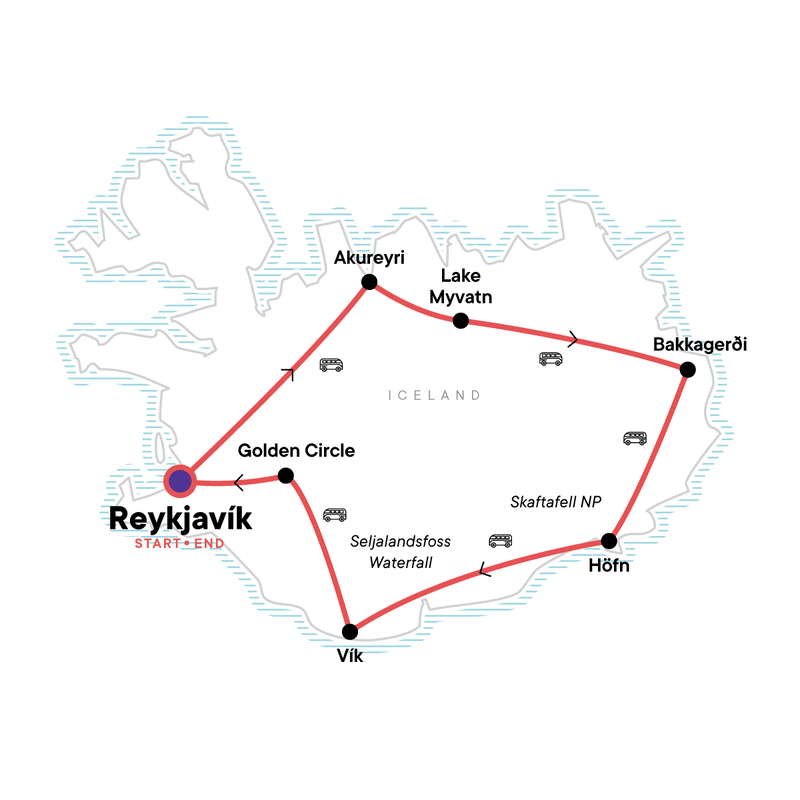
What's Included:
- Goðafoss Waterfall visit
- Mývatn Lake viewpoint stop
- Dimmuborgir, and Námaskarð stops
- Námaskarð Geothermal Area vist
- Dettifoss Waterfall visit
- Vatnajökull glacier visit
- Jökulsárlón Glacier Lagoon visit
- Reynisfjara Beach
- Seljalandsfoss Waterfall
- The Golden Circle: Gullfoss Waterfall, Geysir Hot Springs, and Þingvellir National Park
- G Adventures Tour Leader throughout
- 6 breakfasts – allow $350-455 USD for meals not included
- Standard hotel (5 nights), local guesthouse (1 night)
- Transport between destinations and to/from included activities using private compact bus
What's Not Included:
- International air travel
- Incidentals
- Travel health and cancellation insurance
- Applicable visas
- Tips or gratuities
- Airport taxes
- Beverages
- Meals not mentioned in itinerary
- Optional tours and admissions
- Airport transfers
Itinerary Download PDF
Arrive in Reykjavík at any time. We recommend arriving a day or two early to fully explore the city. This will also give you time to adjust to the time difference, overcome any jetlag, and avoid any disruption to your trip due to flight delays or cancellations. We can book extra hotel nights for you in Reykjavík before and/or after the trip. Worthwhile visits in and around Reykjavík include the Perlan Museum, Snorkeling in Silfra, and a lagoon, such as Sky Lagoon or Blue Lagoon. Please note that check-in at the hotel is usually around 2:00-3:00 p.m. There are no planned activities until an intro meeting around 6:00 or 7:00 p.m., usually in the hotel lobby. Check for a sign or ask at the reception desk about the exact time and location of the group meeting. Please make every effort to arrive in time for this meeting. If you are delayed and will arrive late, please inform us. Your tour leader will then leave you a message at the front desk informing you of where and when to meet up tomorrow. After the meeting, you might choose to get dinner at a nearby restaurant with your traveling companions and your tour leader to further get to know one another.
After breakfast, we drive to Akureyri, enjoying the beautiful landscape along the way and stopping for lunch at a local cantina. Akureyri, population 17,754, is an important port and fishing center. The area has a relatively warm climate due to geographical factors, and the town's ice-free harbor has played a significant role in its history. It still gets heated with geothermal water from Laugaland in Eyjafjörður. You have the option of heading out to sea to go whale watching off the coast (3-4 hrs). Among the species spotted near Akureyri in Eyjafjörður are bottlenose, minke, and humpback whales. Approximate travel time: 4.5 hrs in private vehicle
Today, we start by taking an excursion to one of the most impressive waterfalls in Iceland, the Goðafoss Waterfall. Measuring 12 m high and 30 m wide, the waterfall is a must see and a short drive from Akureyri. While Iceland is famous for its many spectacular waterfalls, Goðafoss is a favorite for visitors because it's easily accessible by car. There are walking paths around the falls, making it easy to take fantastic photographs from different angles. Next, we will explore the beautiful scenery around Lake Mývatn. Formed during a volcanic eruption 2,300 years ago, the geothermal area is a haven for a massive number of birds. The nutrient rich water also attracts over 10 species of migrating ducks to the area. Atlantic salmon and brown trout thrive in the river, feeding on the healthy midge fly population that swarm over the waters in the summer. Next, we explore lava formations of Dimmuborgir. We will walk the marked pathways for roughly half an hour to spot arches and pillars or check out lava caves. Meaning "dark forts" in Icelandic, Dimmuborgir features black lava formations on display in dramatic fashion. Afterwards, we will stop at Námaskarð to see the bubbling mud pools and steaming fumaroles. There are some wooden pathways around the area, but most visitors prefer to get up close to look at the pools. Please note: Be careful – the mud in this area is thick and sticky, and the residue from the steam can stain clothing. Our next stop is the Dettifoss Waterfall in northeast Iceland, thought to be the most powerful waterfall in Europe, with an average water flow of 193 m³/s. Take in the view of 45 m high, 100 m wide falls and shoot some photos to show off back home. The hike to Dettifoss is roughly a mile round trip, plus you will have the option to do additional walking to different viewpoints after you arrive. Our day ends when we reach Bakagerdi (Borgarfjörður) in the East Fjords region for a night in a local guesthouse. Approximate travel time: 5 hrs by private vehicle
This morning, we leave beautiful Bakagerdi behind to travel down the coast, driving through the beautiful and majestic eastern fjords. We will stop for a view of the Vatnajökull Glacier, the largest ice cap in Europe, which covers over 8% of Iceland. There are multiple volcanoes underneath the glacier as well as over 30 outlet glaciers that stem from Vatnajökull. Our final destination today is the fishing town of Höfn, which is known as the lobster capital of Iceland. Approximate travel time: 4 hrs by private vehicle
Today, we visit the Jökulsárlón Glacier Lagoon with views of the ice cap. The lake is the lowest point in the country and filled with icebergs drifting toward the sea, often with seals sunbathing on the bright blue ice. The blocks of ice coming off the glacier are typically 30 m high, in dramatic shades of white and bright blue. You will have the option (roughly 5,700-9,800 ISK per person) to check out the lagoon by boat to get closer to the floating icebergs which sometimes have seal passengers. Stop by Diamond Beach, which gets its name from chunks of the Breiðamerkurjökull glacier that float to shore. As these blocks of glacier ice melt, they develop a crystal clear sheen, set against the black sand of the beach. A highlight of this trip for many is the optional Skaftafell National Park glacier hike (10,990 ISK per person), which you can pre-book with us. Suitable for most fitness levels, the hikers be equipped with crampons, ice axes, and helmets that will allow you to safely hike on a glacier. We will then continue on to the small town of Vík, where we will spend the night. Despite its small size (318 inhabitants as of 2016) it is the largest settlement for some 70 km (43 mi) around. Vík serves as the primary setting of Netflix's Icelandic original series Katla, which follows a group of the village's inhabitants as they struggle in the aftermath of the volcano's first eruption since 1918. Approximate travel time: 3.5 hrs by private vehicle
After breakfast, we visit Reynisfjara Beach, just outside of Vík. In 1991, Islands, a U.S. magazine, counted this beach as one of the 10 most beautiful beaches on Earth. Its stretch of black basalt sand, one of the wettest places in Iceland, and the ominous rock formations offshore make for stunning photos. The cliffs west of the beach are home to many seabirds, most notably puffins that burrow into the shallow soils during the nesting season. Take some time to watch the foaming white waves crash over the black sand (but don’t get too close as the waves here can be extremely powerful), explore the shallow cave if weather and time permits, and get a photo of the basalt sea stacks. Then we visit Seljalandsfoss, a 60 m (196 ft) tall waterfall. Behind the flow of water is a path, allowing visitors to peek behind the curtain of water cascading over the rocks above. Expect about a half an hour of walking, but you can limit yourself to just ten minutes if you wish. From there, we travel along Iceland's famous Golden Circle. The Golden Circle takes in three popular attractions all within 100 km of the capital: Gullfoss, Geysir, and Þingvellir. Our first stop in the circle is Gullfoss, another amazing waterfall. This massive waterfall cascades over three “steps” before spilling into a large crevice. Fed by a glacier lake, the water passing through the falls can be dark gray, depending on how much sediment gets pushed through the river. Expect 10 to 20 minutes of walking, depending on which view points you want to reach. You will then see a variety of geothermal pools and the erupting hot spring Strokkur. Geysir is one of the oldest geysers recorded in the world but is most often dormant. Strokkur, however, erupts a spray of boiling hot water straight into the air about every ten minutes. Expect 10 to 30 minutes of walking, depending on how far into the park you wish to walk. We will then stop at Þingvellir (or "Thingvellir") National Park, a UNESCO World Heritage site, to see the faults created by North American and Eurasian tectonic plates shifting apart. The Oxara River cuts through the largest rift in the valley, Almannagja, and leads to the Oxarafoss Waterfall. Iceland’s Parliament was also established in the area in AD 930, and the park was later created to protect the remains of the open-air assembly grounds. One of the most-visited sights in Iceland, the park is an excellent spot for camping, hiking, and SCUBA diving between the tectonic plates. You should expect 20-30 minutes of walking. In the early evening, we arrive in Reykjavík for a final night in the bustling capital city. Approximate travel time: 5-6 hrs by private vehicle
There are no planned activities today, so you may depart Reykjavík at any time. If you wish to extend your stay in Reykjavík, consider booking post-tour accommodation with us. Please note that check-out time from the hotel is usually mid-morning, but luggage storage services are available at the reception desk. Want more adventure? Book two or more GEEO programs in the same school year and receive a discount! GEEO will give you 10% off of the lesser value program(s) (up to 3 programs per year). If you would like to extend your time abroad but don't see another GEEO program that interests you, let us know. We can work with you to find a trip from our tour operator’s much larger catalog. Their tours are open to the general public and not designed specifically for educators, but we can still offer you and your travel companions a discounted educator price on any additional tours that you book.
Details
Frequently Asked Questions
Please read our general FAQs, where you can find essential information that applies to all of our programs.Resources to Learn & Teach about Iceland
Visit our recommended reading page to see the list of books GEEO recommends reading before your program (this is not required reading). We also have lesson plans and Pinterest boards that may be useful for you as you learn about your destination and prepare to bring lessons back to your classroom.Terms and Conditions
It is very important for you to visit our Terms and Conditions page before signing up for this program.GEEO Program Confirmation Process
We require a minimum of 6 participants for most GEEO programs. We officially confirm that a program will run once at least 8 people have signed up, which provides a margin for individual cancellations. Nearly all GEEO programs ultimately meet this enrollment quota, and in the rare event that a program does not meet the minimum requirement and GEEO cancels the program, we will work with you to find a suitable alternative or provide a refund of your deposit if you prefer. We encourage you to sign up for any program that interests you, and we will notify the entire group once 6 people are booked and again once 8 people are booked. We always emphasize the importance of exercising caution when making non-refundable travel arrangements, especially given the unpredictable nature of travel. For example, we typically recommend booking flights with flexible change/cancellation policies.Cancellation Policy
All cancellations must be submitted to GEEO in written form by emailing your request for cancellation to travel@geeo.org. If you do not receive a confirmation that we have received your written cancellation request, please call us at 1-877-600-0105. Verbal cancellation requests will not be honored.- If you cancel 60 days or more prior to departure, all your program fee payments will be refunded besides your $350 deposit which is kept on file for future use
- If you cancel between 30 and 59 days prior to departure, you will receive a 50% refund and your deposit is kept on file for future use
- If you cancel within 30 days of departure, you will receive no refund, but your deposit is kept on file for future use
Trip Notes
- PACE OF TOUR: Please note that this is a very busy tour, and there are some long drive days.
- WEATHER: The landscape of Iceland is unique and unlike most things you’ve seen. So is the weather. It is unpredictable and changeable, so be prepared to experience a variety of conditions during your time in Iceland. It’s not uncommon to experience rain, sun, wind, and snow all in the same visit, so please pack accordingly. An Icelandic summer is also not what most people consider as summer temperature, and in the highlands it can get quite cold.
- BLUE LAGOON: If you wish to visit the Blue Lagoon, please know that this activity must be done before or after your tour. As this activity is very popular and limits admission, we recommend booking it online well in advance.
- MONEY: Credit Cards (Mastercard and Visa only) or NFC mobile tap-to-pay are the preferred form of payment. You can use USD for tips. You don't really need to take out much Icelandic Krona as you can use your card or phone for nearly everything. Make sure your credit card does not charge an international transaction fee. If you do not have a card without international transaction fees, we recommend getting a new card. Capital One cards do not charge international transaction fees.
- ACCOMMODATION NOTE: Please be aware that properties we stay in with only two stories may not have elevators installed and climbing the stairs with your luggage will be necessary.
Group Leader Description
All GEEO/G Adventures group trips are accompanied by one of G Adventure’s group leaders, which they refer to as Chief Experience Officers (CEOs). The aim of the group leader is to take the hassle out of your travels and to help you have the best trip possible. They will provide information on the places you are traveling through, offer suggestions for things to do and see, recommend great local eating venues, and introduce you to our local friends. Our itineraries often have plenty of free time to explore on your own. While not being guides in the traditional sense, you can expect them to have a broad general knowledge of the countries visited on the trip, including historical, cultural, religious, and social aspects. We also use local guides where we think more specific knowledge will add to the enjoyment of the places we are visiting – we think it’s the best of both worlds.Fitness Level
This trip includes light walking and optional moderate hiking that is suitable for most fitness levels.Single Travelers
Half of GEEO’s participants travel by themselves, so please don’t worry if you do not have a travel companion for your trip. Our program fee is for one traveler in double-occupancy accommodation, and GEEO can find you a roommate of the same gender if you do not have a travel companion. Most of our programs have a “My Own Room” option, also known as a “Single Supplement,” which is an extra fee that you can pay to have a room to yourself. You will only incur an additional charge if you specifically request a single room. To see the price for the “My Own Room” option, please find your program on our extra services page. If you want to room alone, please email travel@geeo.org to request a single room.Joining Instructions
Day 1 is an arrival day, and no activities have been planned. Upon arrival to the city on Day 1, or earlier if you have booked pre-accommodation with us, please make your way to the joining hotel. Please note: Check-in time will be in the afternoon. Once you arrive at the hotel, look for a note at reception from your tour leader. This note will give the details of your Welcome Meeting on Day 1, usually between 6:00 p.m. and 7:00 p.m., during which you will get a chance to meet your tour leader and other travelers, as well as learn more about how the tour will run. If you don’t see a note, please ask reception for details. If you miss the Welcome Meeting, your tour leader will leave a note at reception for you with any information you may need and with instructions for the next morning. In the exit hall of the airport, you will see counters for Airport Direct and Flybus shuttles. These cost between approx. 4,000 ISK and 7,000 ISK, depending on what type of ticket you buy. Please note that the cheaper, larger shuttle bus transfers will drive you to a bus terminal outside Reykjavik first, where you transfer to smaller busses to be delivered to your hotel. Alternatively, you can get a taxi located just outside the arrivals exit. The taxi ride from the airport to the city center generally costs between $100-200 USD.Emergency Contacts
Should you need to contact G Adventures during a situation of dire need, it is best to first call their local G Adventures office. If for any reason you do not receive an immediate answer, please leave a detailed message and contact information so they may return your call and assist you as soon as possible. EMERGENCY CONTACT NUMBERS G Adventures Berlin office: +44 185 837 8000 If you are unable for any reason to contact the local office, please call the numbers listed below, which will connect you directly with the 24-hour Sales team, who will happily assist you. Toll-free, North America only: 1 888 800 4100 Calls from UK: 0344 272 0000 Calls from Germany: 0800 365 1000 Calls from Australia: 1300 796 618 Calls from New Zealand: 0800 333 307 Outside North America, Australia, New Zealand, Germany and the UK: +1 416 260 0999Packing List
Please read this article on GEEO’s blog for our staff’s suggestions on the best gear to pack for your upcoming travels. You must be prepared to carry your own bags and be comfortable carrying them up and down stairs, on and off transportation, and to hotels. As a rule, we try not to have to walk more than 15-20 minutes with your bags, which is why we recommend keeping the weight of your bags between 22-30 lb. Most travelers carry a backpack or rolling bag of small to medium size. No XXL bags please! A daypack is also essential for carrying everyday items. Space is limited on transportation, so there is a limit of one main piece of luggage per person plus a daypack per person. Health & Safety- N95/KN95 face masks (at least a few just in case there is an outbreak within your group)
- Hand sanitizer
- Rapid Covid tests/antigen tests (at least 3)
- Rain coat or waterproof shell jacket
- Warm fleece top
- Personal clothing for cool weather in the 40’s-60’s F – we recommend packing 6 outfits as you can't do laundry.
- Wool socks
- Synthetic travel pants (jeans do not dry as quickly)
- Very supportive, water-resistant walking shoes
- Daypack
- Sunblock
- Sunglasses
- Sun hat
- Refillable water bottle (the water in Iceland is great!)
- Toiletries
- Camera
- Insect repellent
- First-aid kit, including: lip salve, aspirin, bandaids, anti-histamine, Dramamine, Imodium or similar tablets for mild cases of diarrhea, electrolyte powder, insect repellent, extra prescription drugs you may be taking
- Snacks – packing a dozen granola/protein bars is a good idea; you can buy snacks when you get there too, but Iceland is pretty expensive.
- Swimsuit
- Eye mask (the hotels typically had really effective blackout curtains)
- Waterproof pants for over regular pants (Not really necessary unless you want to get really close to the waterfalls
- Wool hiking socks
- High ankle top sturdy hiking boots for glacier hike (You can rent for glacier hike for $8.00)
- Long john (thermal underwear) top for layering
- Travel pillow
- Money belt
- Phone/tablet for internet – most hotels have WiFi
- Chargers for electronics as well converters/adapters, if needed
- AirTags or Tile trackers
- Packing cubes
- Shower cap - showerheads come straight down
- Ziplock bag with a few plastic forks & spoons (numerous lunches grocery stores)
- Earplugs
- Towel for hair and lagoon - only 1 body and hand towel provided in hotels
- Ziplock bags
- Reading/writing material
- Hand sanitizer/baby wipes
- Hairdryer - not always available
- Gloves for when you are on the glacier
- Passport (with photocopies)
- Any entry visas or vaccination certificates required
- Travel insurance ID card
- Flight itinerary/boarding pass(es)
- USD/EUR cash
- Credit/debit card
- G Adventures vouchers
- GEEO Classroom action plans for your group – this is sent a few days before departure
Laundry
We recommend bringing enough clothes so you don't have to do laundry during the trip. You won't be sweating much, so it should be pretty easy. Laundry facilities are offered by some of our hotels for a charge. You can also use a local laundromat, if necessary.Passports and Visas
All GEEO programs require the participant to have a valid passport. Please see our general FAQ for information on obtaining a passport. As with all of our trips, we try to provide the most accurate information we can, but governments sometimes change visa rules. It is your responsibility to double check the information we provide below by searching here. U.S. citizens do not need a visa to travel to Iceland. Non-American participants should check with their government and local Icelandic Embassy to find out if they need a visa.Money Exchange
The local currency in Iceland is the Icelandic krona (ISK). As currency exchange rates fluctuate, we ask that you refer to the following website for daily exchange rates: www.xe.com. We recommend that you obtain cash from ATMs while traveling; they will dispense the local currency. We do, however, recommend that you bring at least $200 USD in cash for emergency use or in case you have trouble with the ATMs. Major credit cards are accepted in most shops, but you may be charged an international transaction fee; ask your financial institution about their international fees. Please note that if you are carrying U.S. dollars, the bills should be in good condition (i.e., not torn, wrinkled, or marked on in any way) and dated recently.Tipping
It is customary in Europe to leave a small tip for service providers, such as waiters, if you are pleased with the service (€1-2 EUR for snacks or 10% of a meal bill). Tipping is an expected, though not compulsory, component of this program and an expression of satisfaction with the people who assist you on your trip. Although it may not be customary to you, it is of considerable significance to the people who will take care of you during your travels. There will be opportunities during the trip to tip your local guides or drivers. You may do this individually, or your tour leader may offer to collect the money and give a tip on behalf of the group. Recommendations for tipping local guides and drivers range from €3-5 EUR per person per day, depending on the quality and length of the service. Ask your tour leader for specific recommendations based on the circumstances and expectations. Also, at the end of your program, if you felt your G Adventures tour leader did an outstanding job, a tip would be appreciated. The amount is entirely your personal preference, but as a guideline, €30-40 EUR per person per week would be appropriate.Flights
We find the best prices for flights are often available around 90 days before departure, but of course this varies greatly from route to route and year to year. You should wait until this trip is confirmed before you book non-refundable flights. GEEO and G Adventures bear no responsibility for any flights purchased before the trip is confirmed. This program begins and ends in Reykjavík. Please double-check our itinerary for the date by which you must arrive in Reykjavík. You may want to arrive in Iceland one or more days early in case you have flight disruptions. You can arrive at any time you choose, but try to make it in time for our 6:00 p.m. Welcome Meeting on Day 1. You can depart from Reykjavík any time on the final day of the program, or stay later to see more of the city.Plugs and Converters
There are two components to provide external power to your device: adapters and transformers (also called electrical converters). The adapter is for your device's plug, adapting the prongs on a standard U.S. two- to three-pronged power cord to fit the local outlets. The transformer/converter changes the local voltage to the voltage used in the U.S. Iceland has type C outlets for two circular prongs, and the voltage is 220-240V. (Standard U.S. electrical outlets are 120V.) Most new devices, including phones and laptops, are made to work with the different voltage rates, but some devices, like hair dryers, may only work on the U.S. standard of 120V. Check your device's plug or manual to see what voltage range it requires. Most transformer blocks will have an “Input” line that defines its voltage capacity; for example, “Input: 100-240V” means that it will work with voltages between 100V to 240V. If your device can’t handle the higher voltage, you’ll need to purchase a transformer/converter. You can find world transformers/converters online or at many retail stores in the travel section.Expectations
Before you decide to travel with GEEO, it is important that you read all of the information about the program you are considering. Remember, our programs are quite adventurous.- The purpose of the accommodation is to provide a safe, well-located place for you to sleep. Sometimes you will be pleasantly surprised, but do not expect luxury as we are trying to keep these trips as inexpensive as possible.
- You must be able to easily carry or roll your luggage, so do not over-pack.
- Please make sure you have thoroughly read the itinerary and can handle the group activities, which sometimes include day hikes with your daypacks.
- We recommend always carrying snacks with you. Meals can sometimes be far apart.
- Please make sure you understand the role of your tour leader on this trip as they are not the traditional “guide” you may be expecting. While our trips are educational, they aren’t study/lecture trips. We want you to learn through exploring, and much of your experience will be based on how active you choose to be in acquiring knowledge and interacting with locals.

